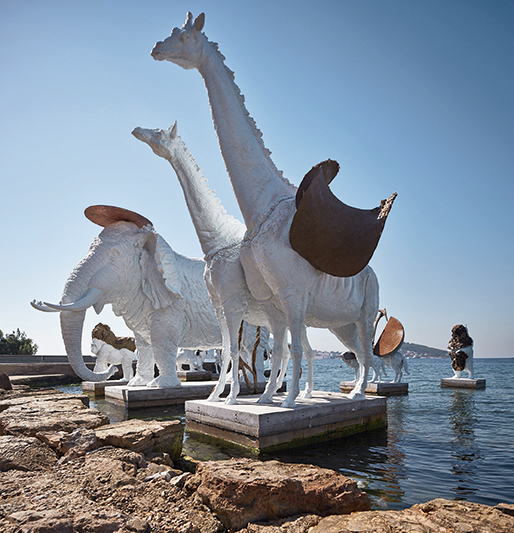Purple Magazine
— Purple 25YRS Anniv. issue #28 F/W 2017
Adrián Villar Rojas
on the end of the world
interview by ALEXIS DAHAN
portrait by PANOS KOKKINIAS
all photos by JÖRG BAUMANN
courtesy of the artist, Marian Goodman Gallery, New York, Paris, London and Kurimanzutto, Mexico City
 THE MOST BEAUTIFUL OF ALL MOTHERS, 2015, 14TH ISTANBUL BIENNAL, INSTANBUL, TURKEY
THE MOST BEAUTIFUL OF ALL MOTHERS, 2015, 14TH ISTANBUL BIENNAL, INSTANBUL, TURKEY
In 2017, Argentinean artist Adrián Villar Rojas created four major projects, all bearing the same title: The Theater of Disappearance. The projects were a documentary shown at the Berlinale, a plaster-cast dinner party on the rooftop garden of The Metropolitan Museum in New York, the summer exhibition at Kunsthaus Bregenz, and a solo show at Neon in Athens.
ALEXIS DAHAN — Could you explain how these different projects meet under the same title?
ADRIÁN VILLAR ROJAS — A title is an engine, a symbolic surface that enables you to create a universe. You know when a title begins, but…